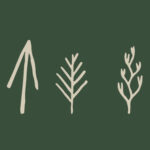New citizen science project to help endangered red squirrels
14th October 2022
First Highland-specific survey will cover over 25,000 square kilometres
People living in the Scottish Highlands are being asked to take part in a major citizen science study this autumn, as part of a pioneering red squirrel reintroduction project being carried out by Trees for Life.
The new research is part of a successful rewilding initiative, through which Trees for Life has established 10 new red squirrel populations in the Highlands so far. Over the past six years, the charity has reintroduced a total of almost 200 squirrels at sites across the north, including Spinningdale, Golspie, Shieldaig, Kinlochewe and Plockton.
With Scotland the UK’s last remaining stronghold of the endangered native species, these reintroductions have helped to significantly bolster the north’s red squirrel population.
Trees for Life now wants to find out how far these relocated reds have spread out from their initial release sites, and about the total size and range of the Highland region’s entire population.
The charity is calling on the public to report current and historic squirrel sightings via the Saving Scotland’s Red Squirrels website at scottishsquirrels.org.uk. Each reported sighting will be fed into a large dataset, supplementing in-person survey work that Trees for Life will carry out later this year.
Becky Priestley, Red Squirrel Project Manager at Trees for Life, said: “Citizen science is a fantastic way to gather information about wildlife populations, especially across a large area like the Highlands. By reporting sightings, local people can provide invaluable information that will help us to ensure a better future for red squirrels.
“By filling the gaps in knowledge about where this endangered species is found, we can create an up-to-date distribution map to use as a baseline for future monitoring and to identify where future releases could make a positive difference.”
While similar studies have been carried out in other parts of the UK and Ireland, this will be the first Highland-specific survey, covering a total land area of more than 25,000 square kilometres.
Trees for Life has divided the region into five square kilometre quadrants, or plots, and hopes to gather sightings records from as many areas as possible, while also drawing on data from other wildlife professionals who work in woodlands.
Becky said: “Any plots that don’t return records will need to be physically surveyed to check for evidence of red squirrel presence, by searching for feeding signs. But in areas with low numbers of squirrels, this can be like looking for a needle in a haystack!
“Public sightings reports give us good, hard evidence of squirrel presence – so we are calling on people to get behind this survey and help us to gather as much information as we can.”
Red squirrels live in woodlands where there is a good variety of tree species for them to feed on, including Scots pine, larch, hazel, oak and beech. Autumn is the best time of year to spot a squirrel, as they are busy collecting food to store for the winter.
The new study will also feed into the Great Scottish Squirrel Survey, an annual survey that gathers data on the status of reds and also the non-native grey squirrels across Scotland.
Since being introduced to the UK in the 1870s, the grey squirrel has spread throughout most of the country, decimating red squirrels through competition for food and disease.
Trees for Life has been working to rewild the Scottish Highlands since the early 1990s, which includes returning lost native wildlife to the landscape. The charity has been carefully relocating reds from Inverness-shire and Moray to suitable woodlands in the north west where they can spread, safe from the threat of grey squirrels.
For tips on how to spot a red squirrel, you can watch a Trees for Life video here.


